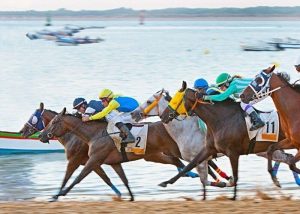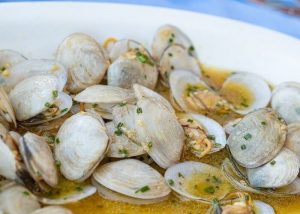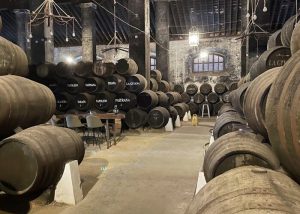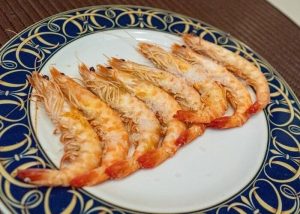PROVINCIA DE CÁDIZ – The Spanish gastronomic capital of 2022 is located in the province of Cádiz, near beautiful beaches and overlooking the Doñana National Park. The privileged city has a rich cultural and monumental heritage due to its strategic location.
In addition to it being the gastronomic capital, Sanlúcar de Barrameda has so much more to offer. It witnessed the third voyage of Christopher Columbus and also the port of departure and arrival of the expedition of Magellan and Elcano. It is precisely now, in 2022, when the commemorative acts of the fifth centenary of the First World Tour (1519-1522) will reach their peak.
Doñana National Park, one of the most important wetlands of Europe, is accessible from Sanlúcar by crossing the Guadalquivir River. The La Algaida and Pinar Natural Park are also nearby. This is a kind of natural ring that forms one of the green lungs of Andalucia. Furthermore, UNESCO declared it a Biological Reserve in 1980.
In addition to these attractions, you can include the rich gastronomy in the town and its surroundings. Excellent and exclusive products such as shrimp and Manzanilla play an important role in this. Consequently, thousands of tourists visit the area precisely to enjoy this perfect combination for their taste buds. As such, Sanlúcar receives about 80,000 tourists a year.
World Gastronomic Capital for 2022

Enjoying the local gastronomy thus perfectly complements the range of activities and festivities in the area. Moreover, there is an emphasis on the Manzanilla Fair, the embarkation of the brotherhoods for their journey to El Rocío during the famous pilgrimage ‘La Romería del Rocío’ or the spectacular horse races on the beaches of the municipality. These were declared events of international tourist interest in 1997.
Also read: Fiestas, ferias and celebrations in Spain 2022
Historical significance
With every step you take in Sanlúcar you will feel the history of the town that served as an important transit port after the discovery of the American continent and the resulting trade. The palaces, the aristocratic mansions, defensive buildings, and historic gardens are a fascinating combination with old wineries, where you can smell the soft aromas of Manzanilla.
Doñana
The Doñana National Park is not only a key to tourism in Sanlúcar, but its gastronomic richness also contributes significantly to this. Moreover, Phoenicians, Romans, and Arabs contributed their ingredients to the native cuisine. The Christian Reconquest stimulated the production of an admirable diversity of wines, including the unique Manzanilla.
The gastronomic evolution did not stop there, because, with the countless overseas expeditions from the city, Sanlúcar sees its kitchens again enriched with all kinds of herbs, fruits, and vegetables previously unknown. Peppers, tomatoes, and potatoes gave their final impulse to both local gastronomy and agricultural production.
Also read: New TV series on National Parks in Spain
Horse racing on the beach
The horse races on the beaches of Sanlúcar de Barrameda have been held since 1845, making them the oldest in Spain. They are also the only races where Thoroughbreds have the chance to compete in a unique environment: a natural racecourse over the beach over 6 kilometres long, with the Doñana National Park and beautiful sunsets in the background.
 Flavours of Sanlúcar
Flavours of Sanlúcar
The extensive gastronomic offer of Sanlúcar has three main pillars: products from the vegetable garden, the bodegas, the sea, and the river mouth. Sanlúcar’s fish and shellfish, including shrimp, have a cross-border reputation. Moreover, they are themselves as famous as the dishes made with them. These include stews with authentic sea flavours such as stingray in orange sauce, and the traditional Galera soup (with shellfish). These dishes are generally served with the local Manzanilla wine.
Manzanilla is a unique and very special wine
La Manzanilla is one of the products with Sanlúcar de Barrameda as ‘surname’. The vines, spread over ‘pagos’, have traditionally grown on the albariza soil. Sanlúcar currently has more than 20 wineries, fed by their vineyards or by musts made from palomino grapes.
Wineries
Sanlúcar de Barrameda belongs to the wine label areas ‘Jerez, Vinagre, Brandy de Jerez’ and ‘Manzanilla de Sanlúcar de Barrameda’. Sanlúcar’s wineries all have high, well-ventilated cellars supported by slender pillars in characteristic shapes. Visit one of those bodegas. This is almost always combined with a wine tasting.
Manzanilla Interpretation Centre
The Manzanilla Interpretation Centre (CIMA) was recently opened in Sanlúcar. This includes 20 wineries and is next to the large indoor food market. It offers visitors the opportunity to get to know the process of elaboration and maturation of this unique wine.
 The shrimp
The shrimp
The king of the sea and the gastronomy of Sanlúcar is the ‘langostino’. This Sanlúcar shrimp has since conquered many nationally and internationally recognized chefs’ kitchens who have included the shrimp as a star product in their menu. Its scientific name is Penaeus kerathurus. The Sanlúcar shrimp gets its special taste from its habitat, in the brackish waters of the Guadalquivir estuary. And is, therefore, mainly consumed fresh. Baked ‘a la plancha’ with some garlic and olive oil. The highly prized meat is also further cooked or baked as part of traditional seafood stews.
Casa Bigote
Try some of these dishes at Casa Bigote. This restaurant is a reference in local gastronomy and winner of the Bib Gourmand prize of the Michelin guide. Furthermore, it is also listed with a sun in the Repsol guide.
The market
The food market is the epicentre of Sanlúcar’s gastronomy. You will find it in the heart of the shopping area in the historic part of the town. The building has an area of almost 1,400 square meters and dates back to the 18th century. What stands out most is the fishing area with 24 stalls.
A paradise for the sweet tooth
Many typical desserts and pastry products in the area have their origin within the walls of the monasteries of the many religious orders that were founded here under the patronage of the Dukes of Medina Sidonia. Taste the sweets traditionally made by the nuns of Madre de Díos or the Monastery of Regina Coeli. Think of ‘yema’, ‘tocino de cielo’, almond donuts, shortbread, ‘pestiños’, and the ‘cocadas’ made for more than 40 years. During Holy Week, the highly traditional ‘alpisteras’ dominate the shop windows of the confectioners.
The Plaza del Cabildo
The heart of the city for the inhabitants is the Plaza del Cabildo. Together with Bajo de Guía, you have the gastronomic epicentre here. At Casa Balbino, the typical shrimp tortillas are a must-try. And in another corner of the square try the traditional potatoes from Sanlúcar marinated with onion and parsley, good oil, sherry vinegar, and some melva fillets. Another gastronomic classic is Bar La Gitana, named after the famous manzanilla.
The street Bajo de Guía
The area of Bajo de Guía, with Doñana in the background and more than a dozen restaurants overlooking it, forms the golden mile of Sanlúcar gastronomy. The fish auction was once held in this fishing district upon the arrival of the boats. It is now one of the most attractive places in Sanlúcar for the quality and freshness of its products.
On the menus of the restaurants here, there is no shortage of seafood stews. Mirador de Doñana, Avante Claro, Poma, La Lonja, Joselito Huertas or Casa Juan are just some of the excellent restaurants. Furthermore, they include dishes such as monkfish with fried bread, ‘sopa de Galera’ or the seafood salpicón .
Also read: The art of Sherry


 Flavours of Sanlúcar
Flavours of Sanlúcar
 The shrimp
The shrimp